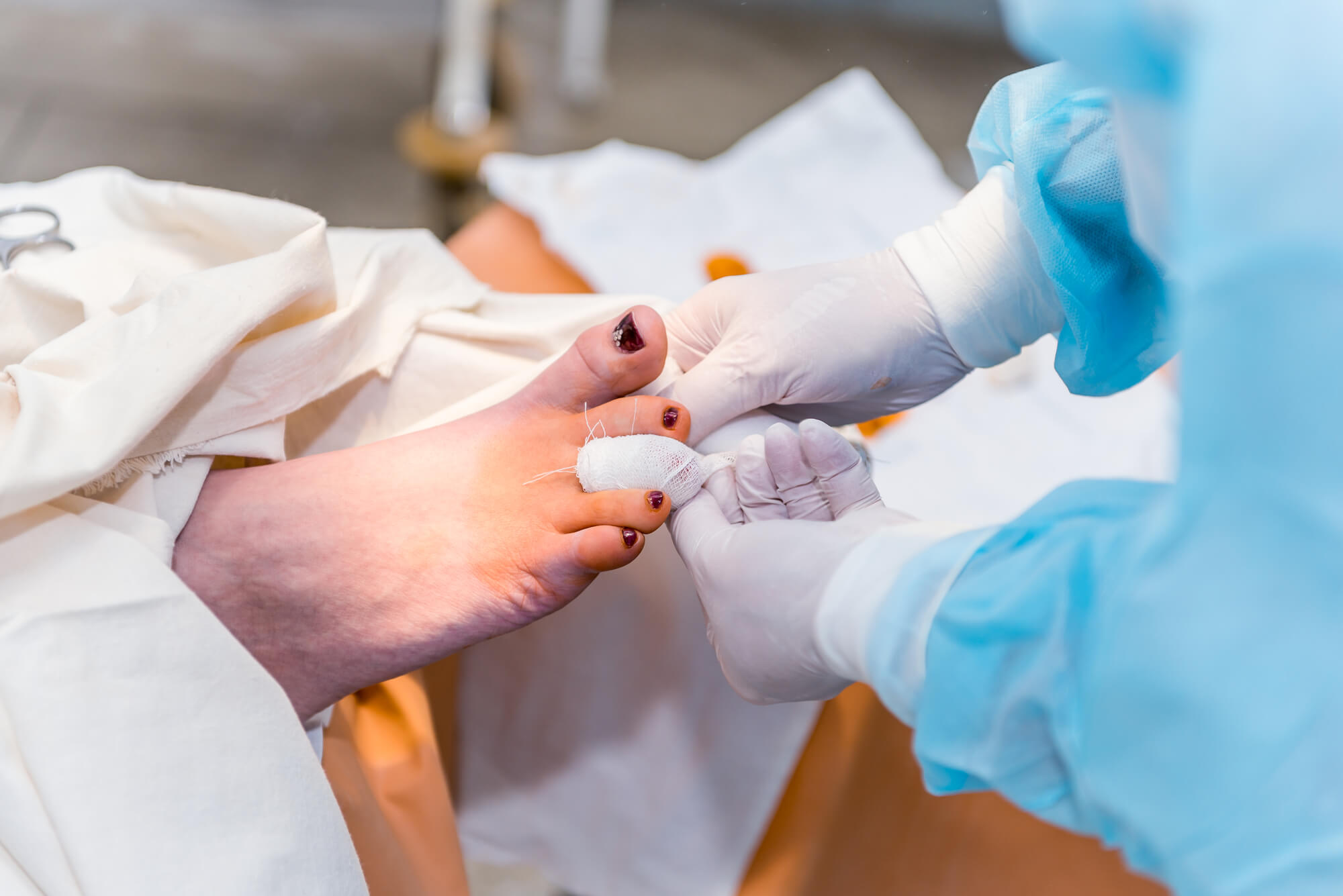A Comprehensive Guide to Foot Reconstruction Surgery
If you are experiencing foot or ankle pain or deformity, it may be time to consider foot reconstruction surgery. This surgical procedure is performed by highly skilled podiatrists and can be a highly effective treatment option for a range of foot and ankle conditions.
In this comprehensive guide, we will explore what foot reconstruction surgery is when it is necessary and what to expect before, during, and after the procedure. We will also discuss the different types of procedures and their benefits and risks.
What is Foot Reconstruction Surgery?
Foot reconstruction surgery is a surgical procedure that is used to correct deformities, alleviate pain, and restore function to the foot and ankle. It is typically performed by highly trained podiatrists who specialize in foot and ankle surgery. The goal of is to restore mobility and improve the quality of life for patients with foot and ankle conditions.
When is Foot Reconstruction Surgery Necessary?
Foot reconstruction may be necessary for a variety of reasons, including:
- Deformities, such as bunions, hammertoes, or flatfoot
- Fractures in the foot or ankle
- Arthritis or other degenerative conditions in the foot or ankle
- Ligament or tendon tears or ruptures
- Severe ankle instability
If you are experiencing any of these conditions, it is important to consult with a podiatrist who specializes in foot and ankle surgery. They can help determine whether foot reconstruction surgery is the right treatment option for you.

Types of Foot Reconstruction Procedures
There are several different types of foot reconstruction procedures, each with its own benefits and risks. Your podiatrist will recommend the most appropriate surgery based on your needs and condition.
Bunionectomy
A bunionectomy is a surgical procedure that is used to correct bunions, which are bony bumps that form at the base of the big toe. During a bunionectomy, the podiatrist will make an incision in the foot and remove the bony bump. They will then realign the toe joint, and in some cases, remove a portion of the bone to correct the underlying deformity.
The expected outcome of a bunionectomy is a reduction in pain and improved mobility. Patients typically experience some discomfort and swelling for several weeks after but can expect to return to normal activities within a few months. Risks associated with bunionectomy surgery include infection, nerve damage, and bunion recurrence.
Arthrodesis
Arthrodesis, also known as fusion surgery, is a procedure that is used to join two or more bones in the foot or ankle. This is typically done to alleviate pain and improve stability in the foot or ankle. Arthrodesis may be recommended for severe arthritis, hindfoot and midfoot deformities, and ankle instability.
During the arthrodesis procedure, the podiatrist will make an incision in the foot or ankle and remove any damaged cartilage. They will then use special instruments to realign the bones and join them using screws, plates, or other devices. The expected outcome of arthrodesis is improved stability and reduced pain in the affected area. However, this procedure can limit mobility and flexibility in the affected joint.
Risks associated with arthrodesis surgery include infection, nerve damage, and failure of the bones to fuse together properly. Patients may also experience stiffness and reduced range of motion in the affected joint.

Osteotomy
Osteotomy is a surgical procedure that involves cutting and repositioning bones in the foot or ankle. This procedure is typically used to correct deformities such as flatfoot or high arches. The podiatrist will make an incision in the foot or ankle and use special instruments to cut and reposition the bones in the foot or ankle.
The expected outcome of osteotomy is improved alignment and function in the affected area. Patients typically experience some discomfort and swelling for several weeks after the surgery, but can expect to return to normal activities within a few months. Risks associated with osteotomy surgery include infection, nerve damage, and recurrence of the deformity.
Calcaneal Osteotomy
Calcaneal osteotomy is a surgical procedure that is used to correct hindfoot deformities. During this procedure, the podiatrist will make an incision in the foot and reposition the heel bone to improve alignment and reduce pain. This procedure is typically recommended for patients with flatfoot or high arches.
The expected outcome of calcaneal osteotomy is improved alignment and function in the hindfoot. Patients may experience some discomfort and swelling for several weeks after the surgery, but can expect to return to normal activities within a few months. Risks associated with calcaneal osteotomy surgery include infection, nerve damage, and recurrence of the deformity.
Tendon Transfer
Tendon transfer is a surgical procedure that is used to correct conditions such as flatfoot or high arches. During this procedure, the podiatrist will transfer a healthy tendon from another part of the foot or ankle to the affected area, thereby correcting the deformity. Tendon transfer may be recommended for patients who are not good candidates for osteotomy or arthrodesis.
The expected outcome of tendon transfer is improved function and stability in the affected area. Patients typically experience some discomfort and swelling for several weeks after the surgery, but can expect to return to normal activities within a few months. Risks associated with tendon transfer surgery include infection, nerve damage, and recurrence of the deformity.

Joint Replacement
Joint replacement is a surgical procedure that is used to replace a damaged joint in the foot or ankle with an artificial joint. This procedure is typically recommended for patients with severe arthritis or other degenerative conditions in the joint.
During joint replacement surgery, the podiatrist will make an incision in the foot or ankle and remove the damaged joint. They will then insert a prosthetic joint into the affected area, restoring function and reducing pain. The expected outcome of joint replacement is improved mobility and reduced pain in the affected area. However, joint replacement surgery may limit mobility and flexibility in the affected joint.
Risks associated with joint replacement include infection, nerve damage, and implant failure.
Preparing for Foot Reconstruction Surgery
If foot reconstruction surgery is recommended for you, it is important to prepare for the procedure properly to ensure a successful outcome. Your podiatrist will provide specific instructions on how to prepare, but some general tips include:
- Quitting smoking, if you are a smoker
- Managing any chronic conditions, such as diabetes or high blood pressure
- Taking any medications as prescribed by your doctor
- Arranging for transportation to and from the surgery center
- Stocking up on necessary supplies for your recovery period
The Foot Reconstruction Surgery Process
Reconstruction surgery takes several hours to complete and is performed in a surgical center or hospital. During the procedure, the podiatrist will make one or more incisions in the foot or ankle, depending on the type of surgery being performed. They will then use specialized instruments to manipulate the bones, ligaments, and tendons in the foot or ankle to correct the underlying problem.
In some cases, the podiatrist may use implants, screws, or plates to stabilize the bones and promote healing. After the procedure, the podiatrist will close the incisions and place a bandage or cast on the foot or ankle.

Recovery and Aftercare
The recovery period after foot reconstruction surgery can vary depending on the type of surgery performed and the patient's individual condition. However, most patients will need to wear a cast or splint for several weeks after to protect the foot or ankle and promote healing. During this time, it is important to keep the foot elevated as much as possible and avoid putting weight on it.
Your podiatrist will provide specific instructions on how to care for your foot or ankle during the postoperative period. This may include taking medications to manage pain, performing exercises to improve mobility, and attending follow-up appointments to monitor your progress.
Conclusion
Foot reconstruction surgery is an effective treatment option for a wide range of foot and ankle conditions. Whether you are suffering from bunions, fractures, arthritis, or other deformities, surgery can help alleviate pain, restore function, and improve your overall quality of life.
However, it is important to consult with a podiatrist who specializes in foot and ankle surgery to determine whether this procedure is right for you. They can provide expert guidance and support throughout the entire process, from preparation to recovery and beyond.

